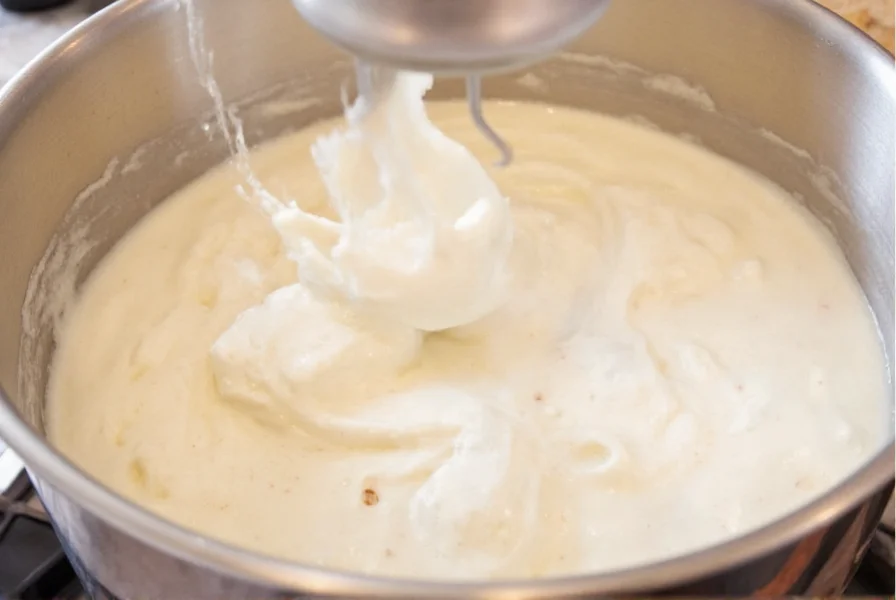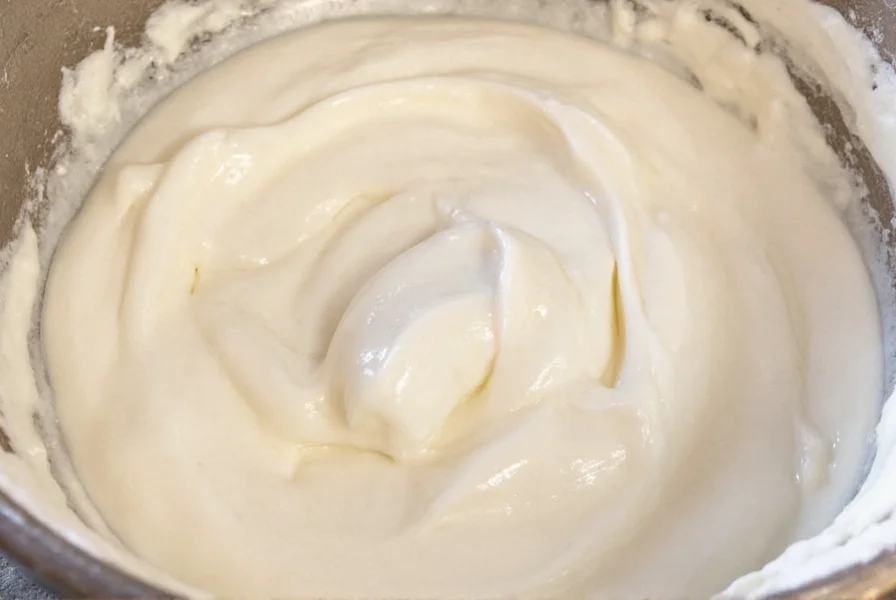The perfect cinnamon roll cream cheese icing combines 8 ounces of softened cream cheese, 1/2 cup unsalted butter, 2 cups powdered sugar, 1 teaspoon vanilla extract, and a pinch of salt. This classic ratio creates a rich, spreadable frosting that complements the warm spices of cinnamon rolls without overwhelming them. For best results, ensure all ingredients are at room temperature before mixing to achieve a smooth, lump-free consistency that holds its shape when piped or spread.
The Ultimate Guide to Perfect Cinnamon Roll Cream Cheese Icing
Nothing elevates homemade cinnamon rolls quite like a luscious cream cheese icing. This essential finishing touch transforms sweet rolls from simple breakfast treats into decadent delights. Understanding the science behind the perfect icing ratio ensures your cinnamon roll cream cheese frosting consistently delivers that ideal balance of tangy cream cheese flavor and sweet richness.
Why Cream Cheese Icing Complements Cinnamon Rolls
Cream cheese icing provides the perfect counterpoint to the warm spices in cinnamon rolls. The slight tang cuts through the sweetness of the dough while enhancing the complex flavors of cinnamon and brown sugar. Unlike traditional powdered sugar glazes, cream cheese frosting adds richness and depth that stands up to the hearty texture of freshly baked rolls.
Classic Cream Cheese Icing Recipe
Creating the best cream cheese icing for cinnamon rolls requires precise measurements and proper technique. This foolproof recipe yields enough frosting for 12 standard cinnamon rolls:
| Ingredient | Measurement | Temperature |
|---|---|---|
| Cream cheese | 8 ounces (226g) | Full room temperature |
| Unsalted butter | 1/2 cup (113g) | Full room temperature |
| Powdered sugar | 2 cups (240g) | Room temperature |
| Vanilla extract | 1 teaspoon | Room temperature |
| Salt | Pinch | Room temperature |
Step-by-Step Preparation
- Ensure cream cheese and butter reach full room temperature (about 2 hours at room temperature)
- Beat cream cheese and butter together until completely smooth and no lumps remain
- Gradually add powdered sugar, one cup at a time, mixing thoroughly after each addition
- Mix in vanilla extract and salt until fully incorporated
- Adjust consistency as needed (see troubleshooting section below)
- Apply to warm (not hot) cinnamon rolls for optimal texture and flavor absorption
Professional Techniques for Perfect Consistency
Mastering the texture of your homemade cream cheese frosting for cinnamon rolls separates good icing from exceptional. The ideal consistency should be thick enough to hold its shape when piped but spreadable with minimal effort. Many home bakers struggle with icing that's either too runny or too stiff.
For the perfect thick cream cheese icing for cinnamon rolls, proper ingredient temperature is non-negotiable. Cold ingredients cause lumps and uneven mixing, while ingredients that are too warm create a runny consistency. The cream cheese must be soft enough that your finger leaves an impression when pressed, but not oily or separated.
When mixing, start with lower speed to incorporate ingredients, then increase to medium speed for 2-3 minutes to achieve maximum smoothness. Overbeating can incorporate too much air, causing the icing to become unstable. For best results with easy cinnamon roll glaze with cream cheese, mix just until smooth and homogeneous.
Troubleshooting Common Icing Problems
Even experienced bakers encounter issues with cream cheese frosting. Understanding how to fix these problems ensures your cinnamon roll icing always turns out perfectly:
- Icing is too runny: This typically happens when ingredients are too warm or measurements are off. Add 1-2 tablespoons of additional powdered sugar while mixing. For immediate thickening, refrigerate the icing for 10-15 minutes before retesting consistency.
- Icing is too thick: Gradually add milk or cream, one teaspoon at a time, until desired consistency is reached. Avoid adding too much liquid at once.
- Lumpy texture: Ensure cream cheese is fully softened before mixing. If lumps persist, press mixture through a fine mesh sieve.
- Icing melts too quickly: This cream cheese frosting that doesn't melt issue often occurs in warm environments. Increase butter ratio slightly (up to 2/3 cup) for more stability.
Delicious Variations to Elevate Your Icing
While the classic recipe satisfies most palates, these creative variations can transform your cinnamon roll cream cheese icing into something extraordinary:
- Lemon zest infusion: Add 1 tablespoon of fresh lemon zest for a bright, citrusy note that complements the cinnamon
- Bourbon cream cheese frosting: Mix in 1-2 tablespoons of bourbon for a sophisticated adult version
- Maple cream cheese icing: Substitute 2 tablespoons of pure maple syrup for some powdered sugar
- Spiced variation: Add 1/4 teaspoon of nutmeg or cardamom for additional warmth
Storage and Serving Recommendations
Proper storage maintains the quality of your cream cheese icing. Store frosted cinnamon rolls at room temperature for up to 24 hours, covered with plastic wrap to prevent drying. For longer storage, refrigerate for up to 5 days. Bring to room temperature before serving for optimal texture.
When making ahead, prepare the icing and store in an airtight container in the refrigerator for up to 3 days. Before using, bring to room temperature and re-whip briefly to restore smooth consistency. This approach works well for those seeking how to store cream cheese icing properly without compromising quality.
Frequently Asked Questions
Can I make cream cheese icing without powdered sugar?
Yes, you can create a cream cheese icing without powdered sugar by using 1 cup of granulated sugar blended with 2 tablespoons of cornstarch in a food processor until fine. However, the texture won't be as smooth, and the icing may appear slightly grainy. For best results with traditional cinnamon roll cream cheese frosting, powdered sugar remains the preferred sweetener.
Why does my cream cheese icing become runny on warm cinnamon rolls?
Cream cheese icing becomes runny when applied to excessively hot cinnamon rolls. The residual heat from freshly baked rolls melts the butter in the icing. Always allow rolls to cool for 10-15 minutes before applying icing. For a more stable cream cheese frosting that doesn't melt, consider increasing the cream cheese ratio slightly or using a higher ratio of powdered sugar to fat.
How can I make my cream cheese icing thicker for piping decorative designs?
For thick cream cheese icing for cinnamon rolls suitable for piping, increase the powdered sugar by 1/4 to 1/2 cup while maintaining other ingredients. Alternatively, refrigerate the prepared icing for 20-30 minutes to firm up the consistency. Professional bakers often use a ratio of 3 parts powdered sugar to 2 parts cream cheese for optimal piping consistency in homemade cream cheese frosting for cinnamon rolls.
Can I freeze cream cheese icing for future use?
Yes, you can freeze cream cheese icing for up to 2 months. Store in an airtight container with plastic wrap pressed directly against the surface to prevent freezer burn. Thaw overnight in the refrigerator, then bring to room temperature and re-whip before using. This method works well for those preparing cinnamon roll cream cheese icing in advance for holiday baking.












 浙公网安备
33010002000092号
浙公网安备
33010002000092号 浙B2-20120091-4
浙B2-20120091-4